звоните: +7 495 204-207-8
e-mail: art@quartagallery.ru
Recent posts
- Необычная судьба тверской художницы Наталии Пономаревой
- Жемчужина деревянной архитектуры русского севера
- Первая народная галерея в Льялово
- Online auction - a practical instruction. How to take part?
- История русской анимации и коллекционирование «истории» мультипликационных фильмов
- История в гравюрах и литографиях уникального печатного издания «Революционная Москва: Третьему конгрессу Коммунистического Интернационала». 1921
- Painting as a Gift
- What happened to frescoes of Kievskaya Metro Station?
Quarta Gallery's artists in the context of the history of contemporary Russian art

Despite the simplicity of the term Modern Art, it includes an enormous amount of various directions and dates back to the 1950s-60s. Regardless of its pioneer ambitions, the search of new forms and avant-garde features, it is nevertheless deeply rooted in the legacy of the great artists of the 20th century, including Henri Matisse, Gauguin, Van Gogh, Cezanne, Georges Braque, Andre Derain and Pablo Picasso. At the start of the previous century Picasso makes his first conscious attempt to reduce the description of the live objects to three general shapes: cube, sphere and cone, thus forming the grounds for the analytical and synthetic cubism which later included the elements of collage in the artworks. Cubism preceded all the other styles of the 20th century, from abstractionism, orphism and suprematism to constructivism, surrealism and expressionism, which gave the world so many art geniuses, such as Kandinsky, Klee, Miro, Magritte, Dali, Munch, Chagall and Modigliani.
A little bit before that a new trend started developing in art and architecture, influenced by the Japanese and Ancient Egypt’s artistic traditions, which later acquired the general name of “modern” or “art nouveau”, bringing the elements of interior décor into painting and adding specific emotional connotation to artworks. Art nouveau in Russia united many outstanding painters, varying greatly in both style and individual approach to understanding their aims in art. However, they were all a kind of ethical rebels protesting against canonic traditional art. Among those was the brilliant book illustrator Ivan Bilibin and also the great romantic of the “modern” style Mikhail Vrubel, the bright art theorist of the time Igor Grabar and also enigmatic Nikolay Rerikh. The art of each of these great representatives of the art nouveau had an impact not only on the 20th century but on the 21st century as well, becoming even stronger and more significant with time.
Meanwhile, in the middle of the 20th century when the world art strives to find an alternative to the modernism developing conceptual vision and minimalism, Russia takes its own path opening the way to the social realism. Social realism, which started its development in the 1930s, enriched the world art palette a lot, revealing the sensuous material plane to the viewer in a completely different manner, filled with the spirit of Soviet romanticism. That period gave birth to a new genre – industrial landscape – along with the ongoing development of the traditional artistic genres, such as Russian lyrical landscape and still life.
Social realism art is deeply rooted in the classic academic approach requiring superb mastership and well-honed technique. That epoch produced such amazing artists as Alexander Deineka, Vladimir
Favorsky, Kukryniksy, Аlexander Gerasimov, Аrkady Plastov, Аlexander Laktionov, Pyotr Konchalovsky and many others. This fundamental school demonstrating the continuity of generations still
reveals new names to the public, the names once overshadowed by their more eminent colleagues, which, nevertheless, have already taken their well-deserved place in the modern history of the Soviet
realistic art. Quarta Gallery presents artists representing classic Russian realistic art: Mai Dantsig, Mikhail Dobroserdov, Peter Pokarzhevsky, Nikolay Solomin, Ivan Yazev, Nadezhda Vorobiova, Dmitry Arkhangelsky, Evsey Reshin, Inna Mednikova, Tamara Guseva, Ludmila Nikitina, Elsa Khokhlovkina.
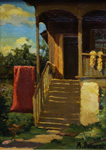
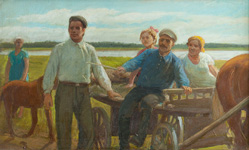
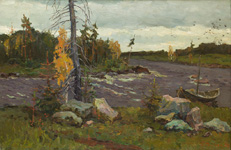
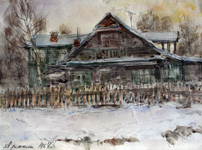
Notwithstanding the fact that the ideology of people’s art and intelligibility dominated the propaganda, in 1950s a new trend was emerging within the official Soviet art which was later known as “non-conformism”. Its participants tried to find new, “opposition” means of art expression and thus divided the art world of the Soviet Russia into two camps: official and non-official.
“Artistic opposition” generated a lot of groups most renowned of which were: “Lianozovskaya” (Е. and L. Kropivnitsky, L. Masterkova, О.Rabin), “Sretensky boulevard” (I. Kabakov, E. Neizvestny, U. Sobolev, U. Sooster) having taken over the torch in the 1960s, “Collective actions” (А. Monastyrsky, G. Kizelvater, I. Makarevitch, S. Romashko, and “Mukhomory” (S. Gundlakh, K. Zvezdochetov, V. Mironenko). Besides, there were individuals within the frames of the Soviet underground who did not join any groups or unions but whose names are world famous today: V. Sidur, А. Zverev, М. Shemyakin.
The artists –nonconformists were practically forced out of the public art life of the country: the state pretended that they did not exist and the Union of Soviet Artists did not recognize either them or their art. Therefore they did not have the opportunity to show their artworks at the exhibition halls and had to use other “fringe” spaces for one or two-day shows at scientific and research institutions, culture houses and clubs. Unlike social realists, nonconformists preferred art form to the subject. However, it was not news either for Russian art since, in fact, they were reviving the artificially cut-off legacy of the 1920s avant-garde movements. It was the time when some notable avant-garde figures appeared on the Russian art stage, including abstractionist Vassily Kandinsky who later authored the concept of the “rhythmic” use of color in painting, and Natalia Goncharova, whose first personal exhibition in pre-revolutionary Russia caused a great hype and was accused of pornography. At the same time, in 1915, in the midst of the First World War, Kazemir Malevich showed the world his “new age icon”, eerie “Black square”, thus drawing a line between the art of the old and new times. The constructivism of the 1920s was another apparent influence on the non-official art of the middle of the 20th century, the style bringing together the then widely popular European art movements: futurism, cubism and suprematism.
Along with those mentioned there were artists who dramatically changed their creative activity during the “Thaw”. Quarta Gallery is honored to present you the works of one such artist – Evgeny Rastorguev, a graduate of the Surikov Institute, the painter much revered by the authorities and made a member of the USSR Union of Artists in 1953 thanks to the reference of his teacher Sergey Gerasimov. Despite the rapid career growth and unlimited opportunities for creativity in the official circle, in the 1960s Rastorguev departed abruptly from the traditional forms to create his own style later named “Gorodets”. The miraculous fantasy world of his “Gorodets” opened the door to Europe for the artist but deprived him of many privileges at home.
Another bright example of the non-conformism was the “Movement” group also presented at Quarta Gallery. The group was founded in 1962 by Lev Nusberg and consisted of about 30 artists, actors, musicians, engineers, physicists, specialists in electronics and psychologists. The “Movement” was the first group in the Russian art history to create installations and performances on a grand scale, and they even managed to implement a few state orders, in particular, the decoration of Leningrad dedicated to the 50th anniversary of the October Revolution. However, their “alternative” character and avant-garde ideas did not fit in with the socialist realia and in 1976 the group broke up after the emigration of Lev Nusberg. Similar fate awaited many other non-conformist artists.
The turning point of the underground art history was the so-called “Bulldozer exhibition” of 1974, which crackdown was highly publicized. The exhibition was organized in the open air in the Moscow region of Belyaevo-Bogorodskoe on September 15. Moscow authorities strongly recommended to cancel the event but the organizers of the exhibition ignored the official instructions and sent out the invitations to many foreign reporters and general public. As a result, the show was cracked down, the crowds were cleared away with the help of water-jets, several people were arrested, a few foreign reporters suffered as well. The most active participants of the exhibition - V. Komar and А. Melamid– had to leave the country. Sculptor Ernst Neizvestny and artist Mikhail Shemyakin along with many others emigrated as well.
Despite such dramatic developments of the Soviet Russian artistic world and notwithstanding great losses incurred by the country due to the emigration of many gifted artists, Russia still produces new names unfairly forgotten, both connected with the academic art tradition and avant-garde movements. Among the names only emerging from the depths of the past Quarta Gallery would like to mention Natalia Orlova, the artist whose life stopped rather early, taking away her chances of being introduced to the wide public. Orlova’s coloristics and her artistic discoveries are well within the 1960s trends and remind the artworks of Andy Warhol.
Some painters of the middle of the previous century chose to work in theatrical environment or to illustrate books, which allowed their fantasy to acquire more peculiar forms unlimited by the rigid official propaganda. Quartа Gallery, for instance, presents one of the brightest artists of Georgia and Russia Robert Kondakhsazov, an avant-garde painter who deliberately chose not to exhibit his artworks to avoid the pressure of the propaganda.
Many young artists of the 1970s who wished to clear themselves off all the “inorganic” demands of the time looked for inspiration in naïve art. They re-discovered Henri Rousseau and Nico Pirosmanishvili, putting aside the art of Russian futurists, which was kept in the vaults and was almost forbidden, who once had already paid tribute to the primitive art. Even today this movement, which once inspired Evgeny Rastorguev to create his “Gorodets”, encourages artists to search for new forms within ethnic traditions. Among modern naïve artists presented by Quarta Gallery, we can mention Nina Gabrielyan, the artist with a bright and highly distinctive individuality, expressing her flamboyant ethnic images on canvas. Modern art strives for synthesis based on the tradition of both Russian and world art, may be this is the reason why we can hear the echo of metaphysical art founded by Giorgio de Chirico at the start of the previous century in the artworks of Andrey Kofman, the genius of Dali and doubtlessly surrealistic motifs come up in the paintings by Alexey Speransky, the descendant of the renowned academic artist Mikhail Kuznetsov, and the artworks of the modern painter Oleg Ivanov evoke the ideas of the “absolute peace of things and the optical vision” of the 1920s innovator David Shterenberg.
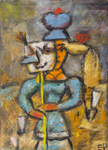
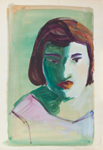

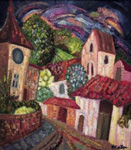
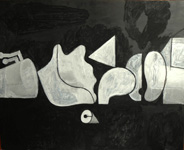
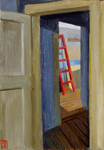
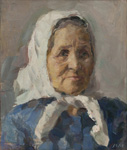
And yet it is a new vision of the artists of the new century who have adopted and accepted the world’s brilliant art legacy to create their own, unseen-before world image and to convey their own sensory experiences.
